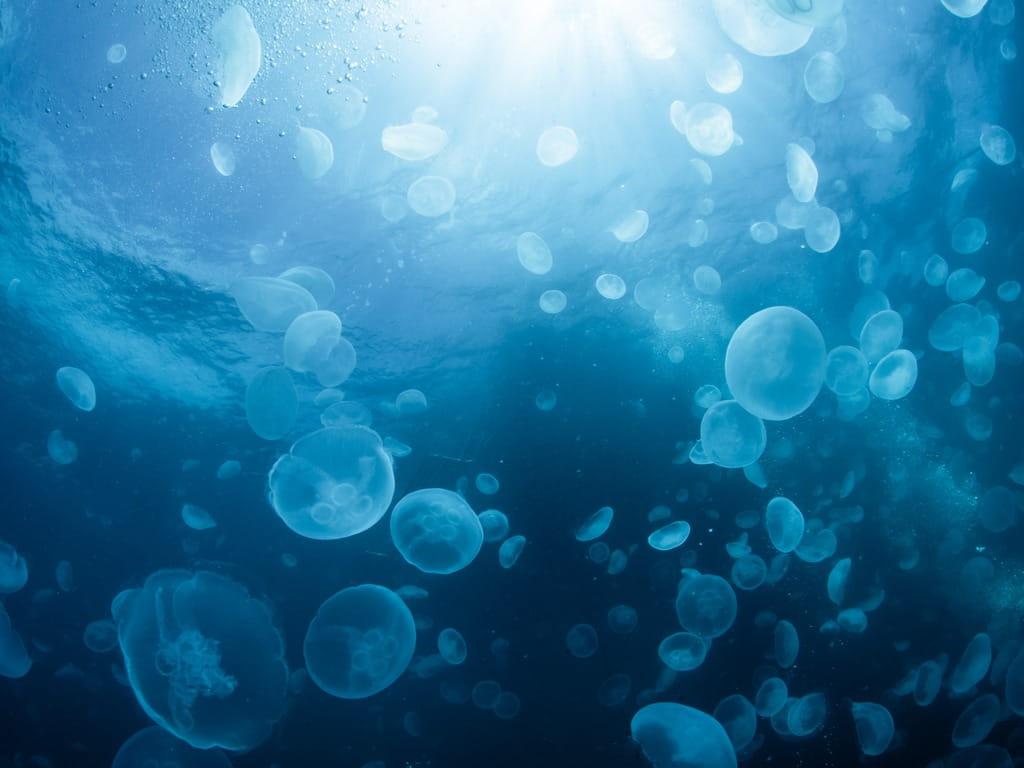The Hidden Sting: How Seabather’s Eruption Can Spoil Your Swim

The Bottom Line
Seabather’s eruption is an itching, burning rash that occurs when jellyfish larvae are trapped between the skin and a swimsuit. While it can be very uncomfortable, the rash is easily treated at home with over-the-counter antihistamines and topical steroids.

What is seabather’s eruption?
Small juvenile jellyfish (larvae) float near the surface of seawater, where they can easily be encountered by swimmers. They are so small that they often cannot be seen. They easily get stuck between the skin and a swimsuit. When this happens, they can discharge their nematocysts (part of the tentacles that release venom), essentially causing a jellyfish sting under the swimsuit. Seabather’s eruption is often referred to by the name “sea lice,” but this term is incorrect. Sea lice are fish parasites that are unrelated to seabather’s eruption.
What does seabather’s eruption look like?
Seabather’s eruption is characterized by a red, itchy, raised rash in areas covered by swimsuits.
What are the symptoms of seabather’s eruption?
Because the jellyfish larvae are so small, many swimmers do not initially feel a sting, but can develop a hypersensitivity (allergic reaction) to either the larvae themselves or the venom release. Some people have symptoms before leaving the water, but symptoms can be delayed for up to 24 hours.
People affected by seabather’s eruption might feel a burning sensation, and the rash can continue to spread over the next few days. The rash of seabather’s eruption is different from the rash associated with swimmer’s itch, as swimmer’s itch affects uncovered areas of the body. Seabather’s eruption can occur in tropical waters, as well as in the southern and eastern coastal areas of the US.
Is seabather’s eruption dangerous?
While seabather’s eruption is very uncomfortable, it generally does not cause symptoms of anaphylaxis (a severe allergic reaction), such as trouble breathing or facial swelling. In most cases, the only symptom is a rash. Occasionally, other symptoms such as fever, fatigue, sore throat, and abdominal discomfort can occur. These symptoms tend to be more common in children than adults.
Can seabather’s eruption spread? Is it contagious?
Seabather’s eruption is unlikely to spread directly from person-to-person unless unwashed swimsuits are shared. If more than one person in a group is affected, it is usually due to them having been exposed while in the same body of water.
How do you treat seabather’s eruption?
Most cases of seabather’s eruption can be easily treated at home. If you suspect seabather’s eruption, remove any bathing garments as soon as possible. Applying vinegar to the skin might help prevent further nematocyst discharge. The rash can be treated with topical steroids such as hydrocortisone cream and antihistamines such as diphenhydramine (Benadryl). Avoid scratching the affected area, as this can lead to a skin infection. Those with gastrointestinal symptoms such as diarrhea should try to stay well hydrated. Most cases of seabather’s eruption resolve within 1 to 2 weeks. It is important to know that if you have had seabather’s eruption in the past, you are more likely to have a reaction if you are exposed to the larvae again.
If you suspect that someone has seabather’s eruption or if you have a question about seabather’s eruption, help from experts is available through the webPOISONCONTROL online tool and by phone at 1-800-222-1222. Poison Control’s expert guidance is always free, confidential, and available 24 hours a day.
Maryann Amirshahi, PharmD, MD, MPH, PhD
Medical Toxicologist
Professor of Pharmacy Emeritus
Poison Control Media Information
Did you find this page helpful? If so, we need your support. Poison Control is in constant competition with misinformation online. Links to www.poison.org or our webPOISONCONTROL triage tool from other websites and blogs help internet searchers quickly find accurate information and Poison Control’s contact information in an emergency. If you use the content from this page, please provide attribution via a link back to this page, www.poison.org, or https://triage.webpoisoncontrol.org/#!/exclusions. By doing so, you could save a life. Thank you!
Poisoned?
Call 1-800-222-1222 or
Prevention Tips
- Avoid swimming in seawater on affected beaches during peak jellyfish season, usually in May and June.
- T-shirts and one-piece swimsuits tend to trap more larvae than other types of swim garments.
- Avoid wearing your swimsuit for prolonged periods of time after getting out of the water.
- Shower with your swimsuit off whenever possible.
- If you have seabather’s eruption, make sure to wash your swimsuit with hot water and detergent before wearing it again.
This Really Happened
A 25-year-old woman was swimming in the ocean off the coast of Costa Rica’s Osa Peninsula when she felt like something was stinging her all over her body, especially the areas covered by her bathing suit. She moved to another area of the beach and continued to swim. When she returned to the resort that evening, the woman changed out of her swimsuit and showered. She noticed a red, itchy rash had developed under her swimsuit. It was uncomfortable for the next few days, but she took Benadryl and applied topical hydrocortisone cream, and her symptoms resolved.For More Information
Mebane GY. Seabather’s eruption. Divers Alert Network, Accessed May 20, 2024.
References
Sil A, Panigrahi A, Chakraborty S. Seabather's eruption. Am J Med Sci. 2020;360(1):81.
Poisoned?
Call 1-800-222-1222 or
Prevention Tips
- Avoid swimming in seawater on affected beaches during peak jellyfish season, usually in May and June.
- T-shirts and one-piece swimsuits tend to trap more larvae than other types of swim garments.
- Avoid wearing your swimsuit for prolonged periods of time after getting out of the water.
- Shower with your swimsuit off whenever possible.
- If you have seabather’s eruption, make sure to wash your swimsuit with hot water and detergent before wearing it again.
